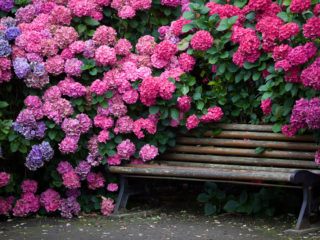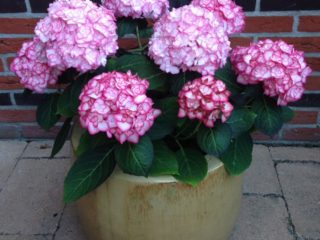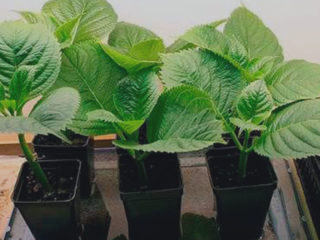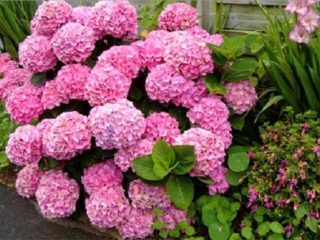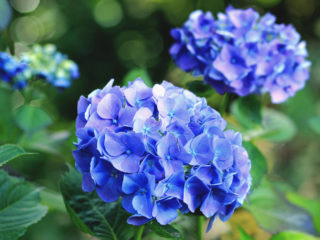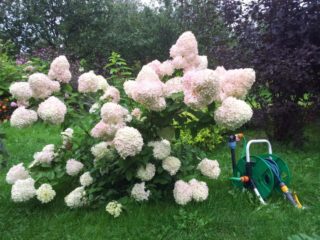Content
- 1 How does hydrangea winter in the Moscow region?
- 2 How to prepare hydrangea for winter in the Moscow region
- 3 Should I cover hydrangea for the winter in the Moscow region?
- 4 When to close hydrangea for the winter in the Moscow region
- 5 How to cover hydrangea for the winter in the Moscow region
- 6 How to cover hydrangea for the winter in the Moscow region
- 7 Advice from experienced gardeners
- 8 Conclusion
Sheltering large-leaved hydrangea for the winter in the Moscow region is carried out in several ways. The types of preparation depend on the age of the plant. One covering structure is not enough to ensure that hydrangea does not suffer from temperature changes and severe frosts.
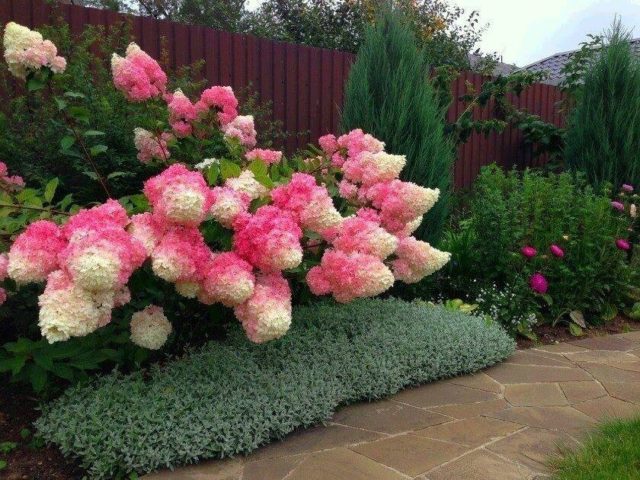
Hydrangea Vanilla Fraze paniculata will decorate any garden plot
Before covering the hydrangea, it is necessary to carry out a number of preparatory procedures. You need to start working on them at the end of summer - beginning of autumn.
How does hydrangea winter in the Moscow region?
The climate of central Russia has its own characteristics. December in the Moscow region is characterized by frequent changes in temperature, thaws and rain. January and February typically bring frost and cold winds to this area. In such conditions, hydrangeas need protection.
Large-leaved and tree-like hydrangeas are especially sensitive to climatic surprises. Paniculata are more hardy, but plants of 1–2 years of life need shelter for the winter, no matter what species they belong to. Plants transplanted to a new location in the fall also need protection.
Hydrangea is native to the Far East, China and Japan. Therefore, plants that are accustomed to sudden changes in temperature and high humidity adapt quite easily to the conditions of the Moscow region. For example, adult specimens of paniculata hydrangea are able to winter safely without shelter even at a temperature of -40 degrees.
Insulation of garden hydrangea in the Moscow region begins in mid-summer, no later than the beginning of autumn. Preparation includes a number of procedures. You cannot start covering if the plant is weakened and sick. If you neglect the preparation rules, you may subsequently lose abundant flowering.
How to prepare hydrangea for winter in the Moscow region
Plants affected by pests and diseases are weakened; they are not able to safely overwinter even with proper shelter. Therefore, preparing hydrangeas for winter in the Moscow region begins in mid-summer and includes a number of activities:
- refusal to use fertilizers containing nitrogen compounds, since they provoke the growth of new shoots, thereby reducing frost resistance; phosphorus and potassium should be used for fertilizing from mid-summer;
- at the beginning of autumn, it is worth stopping watering the plant, except for prolonged dry weather at high air temperatures; stopping watering will speed up the leafing of the branches, which is necessary for a successful winter;
- shortly before covering the hydrangea at the end of the rainy period, you will need to get rid of the foliage on the lower branches, and before the winter season, be sure to remove all remaining leaves.
In order for hydrangea to survive the winter well, you need to prune and hill up, and only then begin covering. You also need to remove all branches affected by pests and diseases.
Should I cover hydrangea for the winter in the Moscow region?
Among gardeners, opinions on the need to cover hydrangeas for the winter are divided. Some people, considering the plant to be winter-hardy, are against the use of covering measures. Someone, caring for their plants, expresses the opposite opinion.
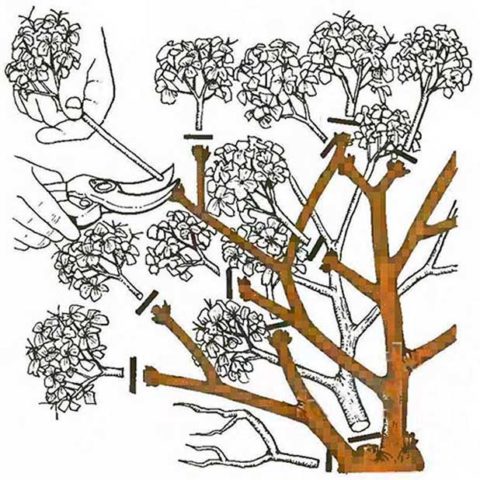
Pruning scheme before sheltering for the winter
Among hydrangeas, the paniculate species are the most frost-resistant. They are able to withstand temperatures down to -40 degrees without damage. But even hydrangea paniculata 1-2 years old requires shelter for the winter.
Tree-like and large-leaved hydrangeas are less resistant to winter conditions in the middle zone. Hydrangea varieties such as Invincible Spirit, Bella Anna, Incredibol and Annabelle are less winter-hardy - these plants require annual shelter for the winter, regardless of the age of the plants.
The remaining representatives of the tree species do not need shelter for the winter. And large-leaved ones, distinguished by bright large flowers, require special care. Winter is a test for them, so they require increased attention.
Hydrangea does not tolerate drafts and does not tolerate increased humidity. In windy areas the plant does not feel well, this may affect its flowering in the summer.
When to close hydrangea for the winter in the Moscow region
Sheltering hydrangeas for the winter in the middle zone depends on weather conditions. When night temperatures drop to -5 degrees and the thermometer is positive during the day, they begin laying branches. It is worth considering that tall plants in some cases are laid in stages.
If the bush is tall and the branches are elastic, first bend them down to 45 degrees, securing them with a wire pin. And after a week they bend the branches to the ground. They become pliable.
When the temperature is -8-10 degrees at night, the plant is covered for the winter.
How to cover hydrangea for the winter in the Moscow region
In the Moscow region in winter, the soil freezes 1 m deep. Under snow cover, freezing reaches 0.5 m. Therefore, in addition to covering the plants, it is necessary to spud up - insulate the trunk circle.
Fallen leaves and sawdust are not suitable for these purposes due to the high risk of pest proliferation and the spread of fungal diseases. Also, rotten foliage attracts rodents that can destroy the hydrangea.
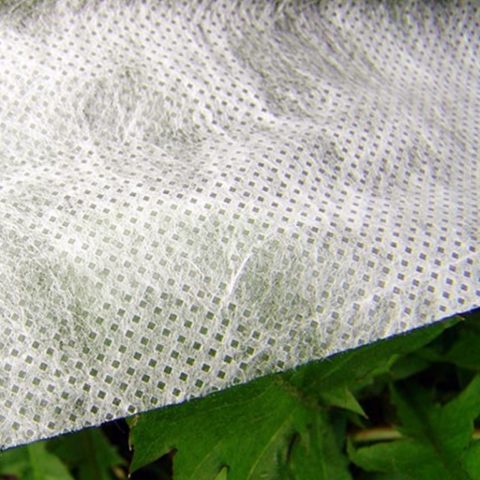
Lutrasil and spunbond are non-woven covering materials that are indispensable for protecting plants in winter
The tree trunk circle is covered with sphagnum, which is subsequently mulched with two layers of humus or compost.
To cover the bush, spruce branches, burlap (the old type, since it is the densest and least blown), covering materials (lutrasil, spunbond), and plastic film are used. For insulation, you can use dry maple or chestnut leaves. They do not rot and retain heat well.
How to cover hydrangea for the winter in the Moscow region
Lutrasil or spunbond non-woven fiber will provide reliable protection against winter cold for hydrangeas.You need to choose materials with a density of at least 60 g per square meter. m. Large-leaved hydrangea will need to be covered with several layers of material: from 2 to 4. This is especially important in snowless winters.
Before covering the plants for the winter, it is necessary to carry out sanitary and anti-aging pruning, removing weak and diseased branches. It is also imperative to remove leaves, flowers and root shoots. It is permissible to shorten the skeletal branches, leaving 1 - 3 buds.
There is no need to cut off all the branches at once. Pruning can be divided into several seasons. But the inflorescences must be removed before each preparation for winter.
Before wintering, it is worth feeding with the following composition: 1 tbsp per 10 liters of water. l. potassium sulfate and superphosphate. A one-time feeding is enough.
After dropping the leaves, the plants are treated with a 3% solution of Bordeaux mixture to prevent pests.
After pruning, fertilizing and hilling, the branches are bent to the ground, fixing their position with thick wire pins. The ends of such brackets should be buried 15–20 cm into the ground so that gusts of wind cannot tear them out of the ground.
And only after that they proceed directly to the shelter. The bush is protected with any of the recommended materials, fixing it around the perimeter of the tree trunk with stones or a layer of earth. The material is wrapped around the plant and tied in several places with rope or secured with tape.
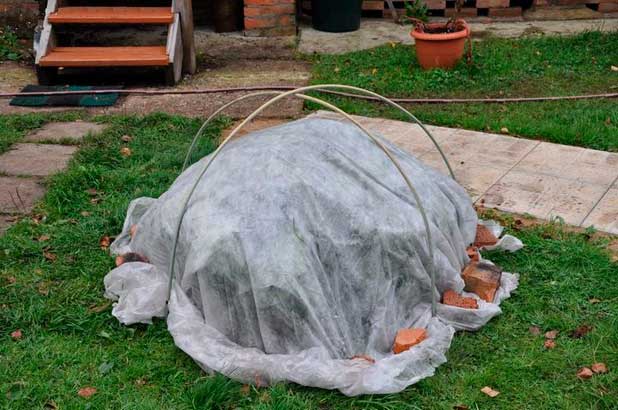
Shelter using wire arches
You can make a “case” from burlap. In December, a bag is put on top or wrapped in plastic wrap. When the thaw and rains recede, the film is removed.
Experienced gardeners build structures from metal arches or plywood to protect hydrangeas. The walls of the box are made double.There should be a layer of air 10–15 cm thick between them.
Sheltering paniculata hydrangea for the winter in the Moscow region
The most optimal protection from winter cold for paniculata hydrangea is hilling + shelter. They do it like this:
- It is easier to cover a short young plant than others: the branches are tied in the form of a cocoon, spruce branches, old tree branches (preferably not fruit trees), roofing felt and plastic film are laid on top. This is enough to survive the winter safely. Snow cover will make such a “blanket” even more reliable.
- Shrubs with tall branches are covered in the same way. They just need to be bent to the ground and secured with wire brackets. Adult plants are hilled and wrapped in non-woven materials.
To protect against cold weather, you can build a structure from wire arches.
Sheltering large-leaved hydrangea for the winter in the Moscow region
Large-leaved hydrangeas are the most unstable to temperature changes, cold winds and dampness. Therefore, it is necessary to cover them for the winter.
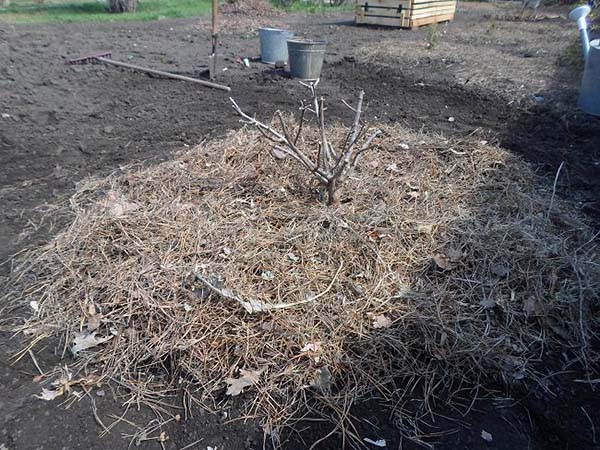
Mulching the trunk circle before sheltering for the winter
Before using covering materials, pruning should be done. Young shoots are shortened by 20–30 cm, diseased and weak branches are cut to the base. Remove the inflorescences. You cannot tear off the leaves with your hands; for this purpose you need to use pruners.
Then do this:
- Bend the branches to the ground, placing spruce branches or plywood under them to protect them from contact with the soil.
- Wrap the branches with non-woven material.
- Place arcs and cover them with fiber in two layers.
- The Endless Summer variety requires a 4-layer cover.
Reliable protection is provided by the plywood box. It is easy for craftsmen to build it on their own plot.The procedure looks like this:
- After pruning and mulching the tree trunk circle, the hydrangea branches are tied using a garden bandage.
- A plywood or wooden box is made according to the size of the plant. They lower it from above.
- The bush is covered with dry soil.
- Cover the box with plywood and cardboard.
- A second, larger one, is placed on top of the first box. The voids between the walls of the boxes are filled with dry sawdust. Cover the top with plywood.
- Wrap the outside of the box with covering material, then with film and tie it with rope.
Shelter of tree hydrangea in the Moscow region
Tree hydrangeas, like paniculate hydrangeas, tolerate midland winters quite well. But not all varieties are suitable for growing in the Moscow region. For example, oakleaf and petiolate have very poor frost resistance. Plants do not die in winter conditions, but they also cannot please you with lush flowers.6
The lower edges of the fiber (film) are fixed with stones or a layer of earth
Therefore, when choosing a variety, it is necessary to study information about these plants. Preparing tree hydrangeas for winter is similar to what is necessary for paniculata.
The plant is mulched with a mixture of peat, rotted manure and soil from the site. With the onset of spring, the mulch must be removed. After pruning, fertilizing and mulching, if necessary, bend the branches to the ground and cover them with spruce branches, on top of which lutrasil, spunbond or film are laid.
Advice from experienced gardeners
Conclusion
Sheltering large-leaved hydrangea for the winter in the Moscow region is the key to future lush flowering throughout the summer. The preparation process seems complicated and painstaking only at first. But in response to such care, the plant is responsive: it will delight you with its lush flowering for a long time and will transform your garden plot.
This video will show you how to properly prepare hydrangeas for winter in the Moscow region:


